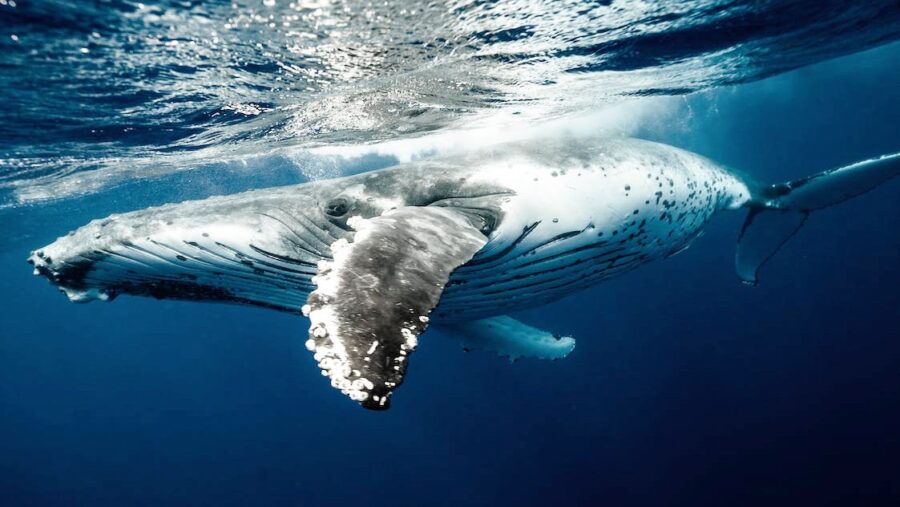Whale Language Breakthrough Allows Scientists Astounding Insight Into Animal Communication

Whales are undoubtedly some of the most intelligent creatures on Earth, and now researchers have discovered that there might be more to whale language than we thought.
Whales And Human Speech?

A recent study found that whale vocalizations from sperm whales exhibited similar traits to human speech, specifically acoustic properties (like pitch) that were analogous with vowels and diphthongs (via Vice).
In other words, whales may be able to communicate more information thanks to this expanded range of speech patterns.
Clicks And Codas

Prior studies of sperm whale language identified clicks and codas (or sequences of clicks) as the key components of their communication styles.
While this communication is certainly advanced and interesting, vowels and diphthongs would add an entirely new layer of complexity that is more in-depth than previous knowledge allowed.
The research was spearheaded by Gasper Begus and a team at the University of California, Berkeley, and the way they uncovered this information is pretty fascinating.
Help From Artificial Intelligence

With the help of artificial intelligence, the team was able to train the deep learning model that Begus previously developed to imitate sperm whale codas and embed information into the vocalizations.
The AI was then able to predict known elements, such as clicks, as well as meaningful acoustic properties. The research even unveiled two distinctive “coda vowels” in whale language which were dubbed the a-vowel and i-vowel that whales regularly used in their whale conversations.
Acoustic Channels

The research team then took the insights that the AI derived from the whale language and analyzed a dataset of 3948 whale codas that were recorded between 2014 and 2018.
They then isolated the acoustic channels by only focusing on one channel from the hydrophones and eliminating click timing from the data analysis, allowing them to pinpoint the acoustic properties.
This confirmed the AI predictions, and the researchers found that the whales were consistently exchanging codas in one or two formants below the 10kHZ range.
Distinct Patterns

As mentioned, the codas displayed distinct patterns that could be considered similar to human vowels, while the upward and downward frequencies in the codas could be considered similar to diphthongs.
This led to the theory that whale language controls vocation frequencies while the clicks serve as pulses. The researchers also compared this speaking style to Mandarin, where subtle changes in vocal tone can alter the meaning of a word that might have identical syllables.
Whale Language Mysteries

This shows that whale language is something that we certainly don’t have a full grasp of yet. The fact that whales may be able to convey different meanings through pitch frequencies and vocal adjustments is certainly an exciting prospect.
It could help reveal even more nuances in their communication patterns in the future. At the very least, it seems like whales can definitely communicate in a more concise and sophisticated way than we had previously assumed.
We have more to learn about whale language, but this is certainly a groundbreaking discovery.
Who knows? Maybe we can even have a conversation with our large marine friends in the future.












